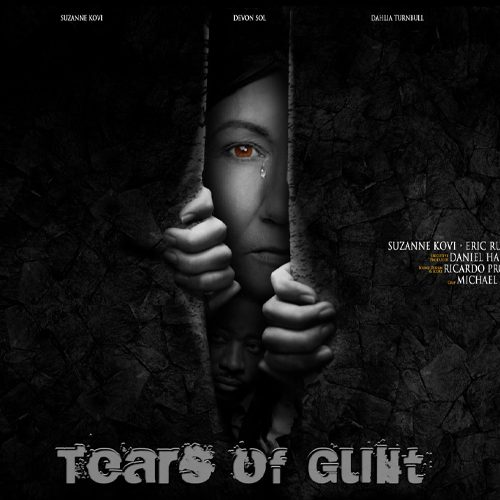POST-PRODUCTION:
$75 per hour: to give an accurate quote we will need the following, if possible:
- Examples of videos that interest you.
- How long you would like the final edited master’s runtime to be.
- Concept Overview.
- Are Visual FX and/or Animation required? (If so, please explain).
- Any special request? (If so, please explain).
Software: Adobe CC Collection: Premiere Pro, After Effects, Photoshop
The Video Post-Production Process: A Comprehensive Guide
Video post-production is a crucial phase in the filmmaking process that takes raw footage and transforms it into a polished, cohesive, and engaging final product. This intricate process involves various steps, from organizing and editing footage to adding visual effects and sound design. In this article, we will delve into the video post-production process, providing a comprehensive guide to help you understand the key stages involved and the benefits they bring to the final video.
1. Organization and Logging:
The first step in video post-production is organizing and logging the footage. This involves reviewing all the raw footage and categorizing it based on scenes, takes, and other relevant details. By creating a well-structured system, editors can easily access and locate specific shots during the editing process. Logging also helps in identifying any missing or unusable footage, ensuring a smooth workflow and preventing unnecessary delays.
2. Video Editing:
Video editing is the heart of the post-production process. It involves selecting the best shots, arranging them in a coherent sequence, and trimming them to create a compelling narrative. Editors use professional editing software to refine the timing, pace, and rhythm of the video. They also add transitions, visual effects, and color grading to enhance the visual appeal and overall storytelling. Video editing requires creativity, technical skills, and a deep understanding of the desired aesthetic and narrative.
3. Audio Editing and Sound Design:
Audio plays a vital role in video production, and the post-production stage is where it is refined and enhanced. Audio editing involves cleaning up background noise, adjusting volume levels, and synchronizing dialogue with the on-screen action. Sound design, on the other hand, focuses on creating and adding sound effects, ambience, and music to enrich the viewer’s auditory experience. This step involves selecting or composing suitable music tracks, designing soundscapes, and ensuring that the audio elements blend seamlessly with the visuals.
4. Visual Effects:
Visual effects (VFX) can elevate a video’s production value and amplify its impact. This stage involves adding computer-generated imagery (CGI), motion graphics, and other effects to enhance the visual storytelling. From simple enhancements like color correction and compositing to complex VFX like explosions or futuristic environments, skilled VFX artists use specialized software to bring imagination to life. Visual effects can transform ordinary footage into extraordinary visual spectacles, immersing viewers in the world being portrayed.
5. Title and Graphics:
Title and graphics are essential elements that provide context, information, and branding within a video. This stage involves creating and adding text overlays, lower thirds, subtitles, and graphical elements such as logos or animated graphics. Graphic designers and motion graphics artists work closely with the editing team to ensure that these elements are visually appealing, consistent with the video’s style, and effectively convey the intended message.
6. Color Grading:

Color grading is the process of enhancing and adjusting the colors and tones of a video to achieve a desired look or mood. Skilled colorists use specialized software to fine-tune the contrast, saturation, brightness, and overall color palette of each shot. This step is crucial in establishing the visual atmosphere and enhancing the storytelling. Through color grading, filmmakers can create a consistent and visually captivating video that engages the audience on an emotional level.
7. Exporting and Delivery:
The final step in the video post-production process involves exporting the edited video in the desired format and delivering it to the intended platform or audience. This stage requires careful attention to technical specifications, including resolution, aspect ratio, and file size. The video should be optimized for differe
nt platforms such as streaming services, social media, or broadcast television. Quality control checks are also conducted to ensure that the final product meets the highest standards of audiovisual quality.
The video post-production process is a meticulous and creative endeavor that transforms raw footage into a polished and captivating final video. From organizing and editing footage to enhancing audio, adding visual effects, and refining color grading, each stage contributes to the overall quality and impact of the video. By understanding the intricacies of the post-production process, filmmakers can elevate their storytelling and create visually stunning videos that engage and captivate audiences.
MUSIC VIDEO POST-PRODUCTION
Enhancing the Magic: Exploring Music Video Post-Production
Music videos are powerful visual representations of songs that combine audio and visuals to create a unique and immersive experience for viewers. Behind the scenes, music video post-production plays a crucial role in bringing these artistic visions to life. In this article, we will delve into the world of music video post-production, exploring the key steps involved in refining and enhancing the visual and auditory aspects of a music video.
Read More
1. Video Editing:
Video editing is the foundation of music video post-production. It involves selecting the best shots, arranging them in a cohesive sequence, and synchronizing them with the music. Editors use professional software to cut, trim, and arrange the footage, ensuring that the visuals align seamlessly with the song’s rhythm and lyrics. They also add transitions, visual effects, and color grading to enhance the video’s visual appeal and convey the intended mood or narrative.
2. Audio Editing and Mixing:
Just like in film post-production, audio editing is a significant aspect of music video post-production. This step involves cleaning up background noise, adjusting volume levels, and synchronizing the audio with the visuals. Additionally, audio mixing ensures that all the elements of the song, including vocals, instruments, and sound effects, blend harmoniously and are balanced in the final mix. Skilled audio engineers use specialized software and techniques to enhance the overall sound quality and create a professional and immersive audio experience.
3. Visual Effects:
Visual effects (VFX) can add an extra layer of creativity and excitement to music videos. This stage involves adding computer-generated imagery (CGI), motion graphics, and other visual effects to amplify the video’s impact. From simple enhancements like color correction and compositing to more complex VFX like animated elements or surreal environments, VFX artists use their technical skills and creativity to bring the artist’s vision to life. Visual effects can help create a visually stunning and captivating music video that engages and mesmerizes the audience.
4. Color Grading:
Color grading is a critical step in music video post-production that sets the overall mood and aesthetic of the video. Through color grading, colorists enhance and manipulate the colors, contrast, and overall tone of the footage to create a cohesive and visually captivating experience. This process ensures that the video’s colors align with the artist’s branding, the song’s emotions, and the desired visual impact. By fine-tuning the colors, colorists can evoke specific feelings and enhance the storytelling within the music video.
5. Title and Graphics:
Title and graphics elements play a significant role in music videos, providing context, lyrics, and branding. This stage involves creating and adding text overlays, animated lyrics, logos, and graphical elements that complement the video’s style and theme. Graphic designers and motion graphics artists work closely with the editing team to ensure that these elements are visually appealing, synchronized with the music, and effectively convey the artist’s message.
6. Visual Synchronization:
In music videos, the visuals must be synchronized with the music to create a seamless and engaging experience. This process involves meticulously aligning the footage with the beats, tempo, and lyrics of the song. Editors use various techniques such as cutting on the beat, matching visual transitions to musical cues, and ensuring that the visual storytelling enhances the emotional impact of the music. The synchronization of visuals and music is crucial for creating a cohesive and immersive music video.
Music video post-production is an intricate and creative process that enhances the magic of music through visuals and audio. Through video editing, audio editing and mixing, visual effects, color grading, title and graphics, and visual synchronization, music videos are transformed into captivating audiovisual experiences. By understanding the fundamental steps involved in music video post-production, artists and filmmakers can bring their artistic visions to life and create visually stunning and emotionally impactful music videos that resonate with audiences.
CORPORATE VIDEO PRODUCTION EDITING
Elevating Corporate Communication: The Art of Corporate Video Post-Production
Corporate videos are powerful tools for organizations to communicate their brand message, showcase their products or services, and engage with their target audience. Behind the scenes, corporate video post-production plays a crucial role in refining the visual and auditory elements of these videos to ensure they are polished, professional, and effective. In this article, we will explore the key steps involved in corporate video post-production and how they contribute to creating impactful and compelling content.
Read More
1. Video Editing:
Video editing forms the foundation of corporate video post-production. Skilled editors select the best shots, arrange them in a logical sequence, and create a cohesive narrative flow. They trim unnecessary footage, add transitions, and ensure that the visuals align seamlessly with the intended message. Video editing software allows editors to fine-tune the pacing and timing, ensuring that the video maintains the viewer’s interest and conveys the desired information effectively.
2. Audio Enhancement:
Audio plays a crucial role in corporate videos, as it helps convey the message clearly and engages the audience. Audio enhancement in post-production involves cleaning up background noise, adjusting volume levels, and ensuring that the voiceover or narration is crisp and intelligible. Background music and sound effects are also carefully selected and mixed to create a professional and immersive audio experience. Clear and high-quality audio is essential to maintain the viewer’s attention and enhance the overall impact of the video.
3. Color Grading:
Color grading is a vital step in corporate video post-production that enhances the visual aesthetics and consistency of the footage. Colorists adjust the colors, contrast, and overall tone of the video to create a cohesive and visually appealing look. They match the corporate brand colors, create a specific mood or atmosphere, and ensure that the video maintains a professional and polished appearance. Color grading helps elevate the visual quality of the video and reinforces the brand identity.
4. Graphics and Motion Design:
Corporate videos often incorporate graphics, animated elements, and motion design to enhance the visual storytelling and convey information effectively. Graphic designers and motion graphics artists play a crucial role in creating visually appealing and informative elements such as lower thirds, infographics, logos, and animated transitions. These elements help reinforce the key messages, highlight important data, and maintain the viewer’s interest throughout the video.
5. Voiceover and Subtitles:
In corporate videos, voiceovers or subtitles are often used to provide additional information or clarify complex concepts. Skilled voiceover artists lend their voices to narrate the script, ensuring clarity and professionalism. Subtitles are added to cater to a broader audience and overcome language barriers. In post-production, the voiceover or subtitles are carefully synchronized with the visuals to ensure seamless integration and effective communication.
6. Quality Control:
Before finalizing a corporate video, a thorough quality control process is essential. This involves reviewing the video for any technical issues, ensuring smooth transitions, verifying the accuracy of information, and checking for consistency in branding and messaging. The video is tested on different devices and platforms to ensure optimal viewing experiences. Quality control ensures that the final product meets the organization’s standards and effectively communicates its intended message.
Corporate video post-production is a meticulous and creative process that elevates the quality and impact of corporate communication. Through video editing, audio enhancement, color grading, graphics and motion design, voiceover and subtitles, and quality control, corporate videos are transformed into powerful tools for engaging with audiences, communicating brand messages, and showcasing products or services effectively. By understanding the key steps involved in corporate video post-production, organizations can create compelling and professional videos that leave a lasting impression on their target audience.
MOTION PICTURE FILM POST PRODUCTION
The Art of Film Motion Picture Post-Production: Bringing Stories to Life
Film motion picture post-production is a crucial phase in the filmmaking process where raw footage is transformed into a captivating visual narrative. It involves a range of creative and technical tasks that contribute to the overall quality and impact of the final product. In this article, we will explore the key aspects of film motion picture post-production and how they shape the storytelling and cinematic experience.
Read More
1. Film Editing:
Film editing is the backbone of post-production, where the raw footage is carefully selected, arranged, and refined to create a coherent and engaging story. Skilled editors work closely with the director to shape the narrative, pacing, and emotional impact of the film. They trim unnecessary scenes, rearrange sequences, and ensure smooth transitions between shots. Through the art of editing, the story is brought to life, capturing the essence of the script and the director’s vision.
2. Sound Design:
Sound design plays a vital role in enhancing the visual storytelling and immersing the audience in the film’s world. Sound designers meticulously craft and mix various audio elements, including dialogue, foley effects, ambient sounds, and music. They ensure that the sound complements the visuals, adds depth to the storytelling, and creates a rich and immersive auditory experience. Sound design helps evoke emotions, build tension, and enhance the overall cinematic experience.
3. Visual Effects (VFX):
Visual effects are used in films to create stunning and realistic visuals that cannot be achieved during production. VFX artists utilize advanced software and techniques to seamlessly integrate computer-generated imagery (CGI) into the footage. They can create breathtaking environments, creatures, or enhance practical effects for a more immersive experience. From explosive action sequences to fantastical worlds, VFX adds a layer of visual spectacle that captivates the audience’s imagination.
4. Color Grading:
Color grading is an essential step in film motion picture post-production that sets the overall mood, atmosphere, and visual tone of the film. Colorists work with directors and cinematographers to adjust the colors, contrast, and saturation of each shot. They create a distinctive color palette that enhances the storytelling and evokes specific emotions. From vibrant and saturated hues to desaturated and moody tones, color grading adds a visual layer that enhances the narrative and strengthens the film’s aesthetic impact.
5. Music and Score:
The music and score of a film contribute significantly to its emotional impact and help guide the audience’s emotions and reactions. Composers work closely with directors to create original music or select existing tracks that complement the narrative. The score adds depth, tension, and atmosphere to the scenes, enhancing the overall cinematic experience. Music and sound can heighten suspense, evoke nostalgia, or elicit a wide range of emotions that resonate with the audience long after the film ends.
Film motion picture post-production is a complex and creative process that transforms raw footage into a captivating visual narrative. Through film editing, sound design, visual effects, color grading, music, and score, filmmakers bring stories to life, mesmerizing audiences with immersive experiences. The artistry and technical expertise of post-production professionals ensure that the film reaches its full potential and delivers a powerful and memorable cinematic experience. By understanding the key elements of film motion picture post-production, filmmakers can craft stories that resonate with audiences and leave a lasting impression.
DOCUMENTARY FILM POST PRODUCTION
The Art of Documentary Film Post-Production: Harnessing the Power of Editing and Sound
Documentary films have the power to educate, inspire, and provoke change. Behind the scenes, the post-production process is where the raw footage is transformed into a cohesive and impactful story. In this article, we will delve into the key elements of documentary film post-production, focusing on the art of editing and sound design, and how they contribute to the overall success of the film.
Read More
1. Editing: Weaving a Compelling Narrative
Editing is at the heart of documentary film post-production. It is the process of selecting, arranging, and refining the footage to create a compelling and coherent narrative. The editor works closely with the director to distill the essence of the story, ensuring that the film engages and captivates the audience. Through the skillful use of pacing, sequencing, and juxtaposition, the editor crafts a seamless flow that draws viewers in and keeps them emotionally invested. They make difficult decisions about what to include and what to leave out, shaping the story into a concise and impactful piece of cinema.
2. Structure and Storytelling: The Editor’s Canvas
In documentary film post-production, the editor acts as a storyteller, piecing together the footage to create a meaningful and impactful narrative. They shape the structure of the film, organizing interviews, scenes, and archival material to create a coherent and engaging story arc. The editor carefully considers the pacing, order of events, and the emotional journey of both the subjects and the audience. By crafting a narrative that resonates with viewers, the editor has the power to evoke empathy, challenge preconceptions, and inspire social change.
3. Sound Design: Enhancing the Emotional Impact
Sound design is an often-underestimated aspect of documentary film post-production. It involves the careful selection and manipulation of audio elements to enhance the emotional impact of the film. Sound designers work with the editor and director to create an immersive auditory experience that complements the visuals and deepens the storytelling. They clean up audio recordings, enhance dialogue clarity, and add ambient sounds, music, and sound effects to create a rich sonic landscape. The right sound design can evoke emotions, heighten tension, and transport the audience into the world of the documentary, amplifying its impact.
4. Color Grading: Setting the Visual Tone
Color grading is the process of fine-tuning the colors and tones of the footage to create a consistent visual style and mood. In documentary film post-production, color grading plays a vital role in enhancing the storytelling and evoking emotions. Colorists work closely with the director to establish the desired visual tone, whether it be vibrant and energetic or muted and somber. By manipulating colors, contrast, and saturation, color grading adds depth and visual impact to the film, contributing to its overall aesthetic and emotional resonance.
5. Final Touches: Titles, Subtitles, and Graphics
The final touches in documentary film post-production include the addition of titles, subtitles, and graphics. These elements provide essential context, convey information, and guide the audience through the film. Titles introduce key sections, subtitles translate dialogue for non-native speakers, and graphics present data, statistics, or other relevant information. These visual elements ensure clarity and accessibility, enabling the audience to fully comprehend the message the film seeks to convey.
Documentary film post-production is a meticulous and creative process that transforms raw footage into a powerful and impactful cinematic experience. Through the art of editing, sound design, color grading, and the addition of titles and graphics, filmmakers craft narratives that engage, inform, and inspire audiences. Understanding the significance of these post-production elements allows filmmakers to harness their potential to create compelling documentaries that leave a lasting impact on viewers and society as a whole.
TV SHOW POST PRODUCTION
Behind the Scenes: Unleashing the Magic of TV Show Post-Production
Television shows have become a central part of our entertainment landscape, captivating audiences around the world. While the actors and storylines take the spotlight, the real magic happens behind the scenes during the post-production process. In this article, we will explore the world of TV show post-production, uncovering the crucial elements that contribute to the seamless and captivating final product.
Read More
1. Editing: Crafting the Narrative
TV show post-production begins with the editing process, where the raw footage is transformed into a cohesive and engaging story. The editor works closely with the director and showrunners to piece together scenes, select the best takes, and establish the pacing and flow of each episode. They have the power to shape the narrative, create suspense, and elicit emotions from the audience. Through skillful editing techniques such as cross-cutting, montages, and pacing adjustments, editors bring the story to life, ensuring that each episode leaves viewers eagerly awaiting the next.
2. Visual Effects: Enchanting the Eye
Visual effects (VFX) play a significant role in enhancing the visual impact of TV shows. From creating stunning environments to bringing fantastical creatures to life, VFX artists work their magic during post-production. They seamlessly integrate computer-generated imagery (CGI) with live-action footage, adding layers of realism or fantasy to the show. Whether it’s a breathtaking landscape, an epic battle scene, or a creature that defies imagination, VFX artists contribute to the immersive and awe-inspiring visual experience that captivates viewers.
3. Sound Design: Engaging the Ear
Sound design is a vital component of TV show post-production that often goes unnoticed. Sound designers and mixers work diligently to create an auditory experience that complements the visuals and enhances the narrative. They clean up dialogue, layer sound effects, and mix music to create a dynamic and immersive sound environment. From subtle ambient sounds to powerful explosions, the sound design adds depth, emotion, and tension to the show, drawing viewers further into the story.
4. Color Grading: Setting the Tone
Color grading plays a crucial role in establishing the visual mood and tone of a TV show. Colorists collaborate with the director and cinematographer to enhance or alter the colors and tones of the footage. By manipulating brightness, contrast, saturation, and color hues, color grading can create a consistent and visually striking aesthetic. The right color grading enhances the storytelling, evokes emotions, and helps establish the atmosphere of each scene, making it an essential part of TV show post-production.
5. Audio Mixing: Balancing the Sound
Audio mixing is the final step in TV show post-production, where all the audio elements are balanced to create a cohesive and professional sound mix. It involves adjusting the volume levels, panning, and spatial positioning of dialogue, music, and sound effects. Audio mixers ensure that every word is clear, every musical cue is impactful, and every sound effect is precisely placed to enhance the viewer’s experience. Proper audio mixing is essential for maintaining the show’s quality and ensuring that viewers can fully immerse themselves in the story.
TV show post-production is a complex and creative process that transforms raw footage into a captivating and seamless final product. Through the art of editing, visual effects, sound design, color grading, and audio mixing, post-production professionals contribute to the immersive experience that keeps viewers hooked. Their meticulous work behind the scenes brings the story to life, elevating the quality and impact of the TV show. Understanding the significance of post-production elements allows us to appreciate the magic that happens behind the scenes and the immense effort that goes into creating our favorite television shows.







